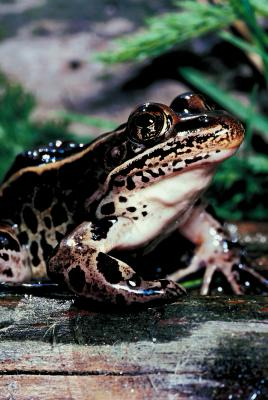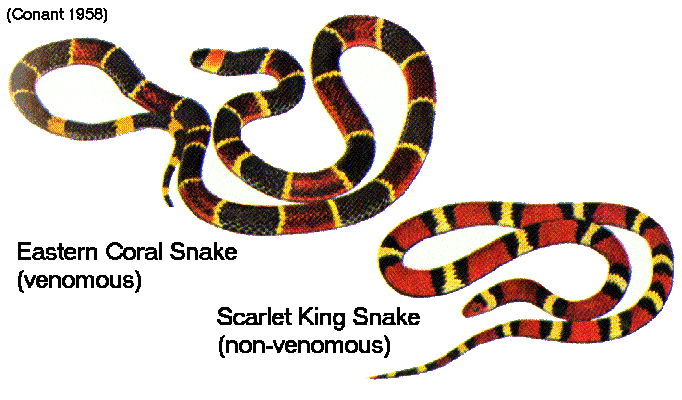
Looks like no one added any tags here yet for you.
Ecology
Study of relationships of organisms to their environment.
Habitat
All living (biotic) and nonliving (abiotic) characteristics of an area in which animals live.
Tolerance Range
Range of values for any abiotic factor that is compatible with life for an animal.
Range of Optimum
Range of values that defines the conditions under which the animal is most successful.
Limiting Factor
Any combination of abiotic factors that is outside the tolerance range for that factor.
Taxus
Orientation of an animal with respect to an abiotic factor.
Energy Budget
An accounting of an animal's total energy intake and description of how energy is used.
Heterotrophic
Organisms that supply energy needs by ingesting other organisms.
Autotrophic
Organism that carry on photosynthesis or other carbon fixing activities to supply food.
Heat Loss
Infrared and heat radiations to surroundings, convection to air, evaporative heat from the animal.
Heat Gain
Solar radiation and infrared and heat radiation from surroundings to the animal.
Torpor
Decreased metabolism & lowered body temperature during brief daily periods.
Hibernation
Decreased metabolism and lowered body temperature for weeks or months.
Winter Sleep
Body temperature drops, but less than hibernation; animal is easily aroused.
Aestivation
Period of inactivity through extended periods of drying, often within burrows.
Moisture
Water lost must be replaced for survival.
Light
Influences timing of daily activities for organisms.
Geology and Soils
Texture, organic matter, and water content of the environment.
Populations
Groups of individuals of the same species that occupy a given area at the same time.
Population Growth
Changes in populations over time due to birth, death, and dispersal.
Exponential Growth
Potential for population increase by a constant ratio per unit time.
Environmental Resistance
Constraints on growth imposed by climate, food, space, and other factors.
Carrying Capacity (K)
Maximum population size that a particular environment can support.
Logistic Population Growth
S-shaped growth curve as population reaches carrying capacity.
Density-Independent Factors
Factors that limit population growth regardless of size.
Density-Dependent Factors
Factors that have a greater impact when population density is high.
Intraspecific Competition
Competition for resources among members of the same species.
Interspecific Competition
Competition among different species for the same limiting resources.
Coevolution
Reciprocal evolutionary change between pairs of species or groups as they interact.
Symbiosis
Close association of two different species living together.
Parasitism
One member (parasite) lives at the expense of the host.
Commensalism
One member benefits while the other is neither helped nor harmed.
Mutualism
Both members benefit from the relationship.
Camouflage
Color patterns that help hide an animal from predators.
Countershading
Contrasting coloration that helps conceal an animal.
Aposematic Coloration
Warning coloration that signals unprofitability to predators.
Mimicry
Species resembling one or more other species for protection.
Communities
All populations living in a specific area.
Community Stability
The ability of a community to maintain its structure and function over time.
Succession
Predictable changes in community structure over time.
Pioneer Community
The first community to become established in a new area.
Seral Stage
A successional stage where life forms make the area less fit for themselves.
Climax Community
A stable final community that can tolerate its own reactions.
Ecosystems
Communities and their physical environment.
Primary Production
Energy converted to living tissues per unit time.
Biomass
Total mass of all organisms in an ecosystem.
Food Chain
Sequence of organisms through which energy moves.
Food Web
Complexly interconnected food chains within an ecosystem.
Trophic Levels
Groupings of organisms based on their energy source.
Producers
Autotrophs that create their own food.
Consumers
Heterotrophs that ingest other organisms for energy.
Biogeochemical Cycles
Recycling of matter within ecosystems from nonliving to living and back.
Gaseous Cycles
Cycles involving gases like oxygen, carbon, nitrogen, and hydrogen.
Sedimentary Cycles
Cycles involving elements like sulfur, phosphorous, and calcium.
Biodiversity
Variety of living organisms in an ecosystem, contributing to sustainability.
Countershading

Aposematic coloration
Mimicry

Camouflage